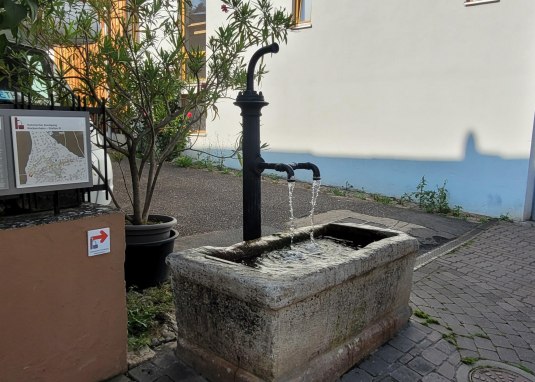Bornstraße runs along a waterlogged layer where several springs emerge horizontally. The spring water was collected in several wells. The Loseborn was already described in 1348 and fed a well here in the 15th century. At the beginning of the 19th century, a two-pipe well is known to have existed here, which was renewed around 1860. Bornstraße was originally named after this spring and was still called Losebornstraße in the 19th century.
A three-tube fountain once flowed between the properties at Bornstraße 1 and 3 and was considered the most beautiful in the village. There was also a public cattle watering place there. The overflow was led to the east in a deep channel. The people of Wackernheim gave the rivulet the name "Donau" or "Donaubach". Combined with another spring, the water flowed into the Osterbach.
Incidentally, the water of the Loseborn drove the mill wheel of the Loseborn mill at Kleine Borngasse 4. In the 18th century, the miller paid the municipality two malt of grain a year for this. This corresponded to about one day's output of this mill.

searchMenu
